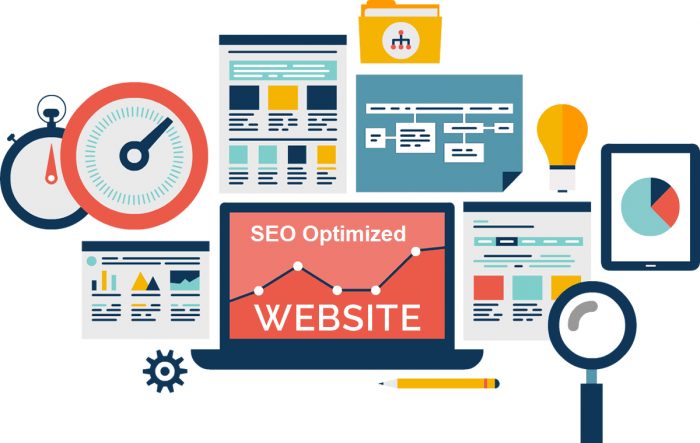A Website service is any product, application, or cloud innovation framework working for interoperable machine-to-machine or application-to-application connection over an organization. They permit various applications to convey and impart information to one another flawlessly.
Table of Contents
What are Website Services?
Website services portray a normalized approach to incorporating Web-based applications utilizing the XML, SOAP, WSDL, and UDDI open guidelines over an Internet convention spine.
XML is used to label the information; SOAP is used to move the pointer, WSDL depicts the administrations accessible, and UDDI is used to post what administrations are accessible.
Utilized principally as a method for organizations to speak with one another and with clients, Website services permit associations to impart information without private information on one another’s IT frameworks behind the firewall.
A key interoperability highlight is that website services are stage and innovation autonomous. This implies they can be written in an assortment of programming dialects while keeping up with the capacity to impart – paying little heed to work framework or kind of gadget – by trading information among clients and servers.
For instance, a website service can permit a .NET application to trade information with a Java application and the other way around.
Present-day website services are the execution of administration situated engineering (SOA). In SOA, two programming parts speak with one another: the shopper programming and the supplier programming.
The customer sends a solicitation to the supplier, sending a reaction back to the shopper.
Here are a few typical instances of how associations use website services:
- Online retailers use web services to compute transporting costs continuously. They can pull data on things and client areas to determine the correct delivery rates. Travel destinations use web services to remove information from various other travel-related locales, like carrier and inn sites, to find and rank the best travel bargains.
- SaaS merchants use web services to incorporate with other programming applications. For example, email specialist co-ops offer web benefits, including an association’s current CRM devices.
How Do Website Services Work?
Non-Concurrent JavaScript and XML – otherwise called AJAX – are some of the advancements used to make web services. An accumulation of dialects can communicate complex messages between various stages and programming dialects, which incorporates a blend of JavaScript, XML, and HTTP server innovation.
As website services have developed, JSON is often utilized notwithstanding. Instead, XML messages are traded using the HTTP convention, the most regularly utilized convention across the Internet.
Website services can uphold correspondence across applications with various open norms, like HTML, XML, WSDL, SOAP, REST, etc.
While utilizing an application, a client decides or solicits an application, which then, at that point, returns information to the client to finish the connection.
Website services smooth out this interaction by pulling information from various sources, including data sets, sites, and different applications across the Web, and afterward returning it to the client.
A significant part of website services, when contrasted with different models of client and server correspondence innovation, is that they don’t regularly give a graphical UI (GUI). Instead, they utilize an automatic point of interaction that shares business rationale, information, and cycles.
Applications cooperate with different applications rather than with clients. Therefore website services are now and then additionally alluded to as application administrations. Be that as it may, website services can be added to a different GUI to be worked by clients, specifically designers.
Advantages of Website Services
The fundamental elements of a website service incorporate the accompanying:
- Website services are accessible both over the web or intranet organizations.
- They utilize a normalized JSON or XML informing and labeling framework.
- Since all correspondence is in XML, they’re not limited by a solitary working framework (OS) or programming language.
- Website services are discoverable through a straightforward area technique.
- Restricted framework reconciliation and interoperability have for some time been an issue that hampered the trading of information across various advancements, organizations, merchants, and B2B (business-to-business) activities.
Website services have made framework mix and interoperability ordinary in the advanced computerized scene.
- Their diminished intricacy permits IT experts to smooth out availability, and they give effective innovation dissemination through a whole organization that prompts a better yield on speculation (ROI).
The significant advantages of utilizing website services can be separated into three classes:
Further developed advancement efficiency
Website services work on the improvement cycle because various frameworks share information and capacities. Rather than incorporating each element into another application, designers can call website services to pull data and usefulness from different applications and convey it to the end client.
Broaden The Existence Of Inheritance Frameworks
Website services permit new applications to speak with heritage frameworks. Rather than supplanting the whole framework or organization foundation, website services can carry present-day highlights to old frameworks.
Cloud Reception
Increasingly, more associations are taking on SaaS arrangements and moving applications to the cloud. This is extraordinarily developing the requirement for incorporation.
Website services make it conceivable to associate cloud, on-premises, and SaaS applications. They permit applications to impart and share information paying little mind to the actual area.
History Of Website Services
Before website services, associations had no natural way to trade data between various frameworks. Improvement was tedious and concentrated as each element of a product apparatus must be worked without any preparation.
The Object Model
In the last part of the ’90s, numerous advancements permitting distant strategy calls (RPC), starting with one framework and later, were created.
- The Common Object Request Broker Architecture (CORBA) utilizes a disseminated design to empower the association between various Os’, customizing dialects, and equipment parts.
- The Remote Method Invocation (RMI) is like CORBA yet completely Java-based. It was an incredible choice for Java developers however was restricted in scope in its operability.
- DCOM(The Distributed Component Object Model) is a restrictive Microsoft arrangement that permits correspondence between programming parts for local Windows programs. DCOM was the most significant contender to CORBA at that point.
Early principles had a few significant constraints. For RMI and DCOM explicitly, they were confined in what the future held. Yet, each of the three ran into substantial issues while working over web firewalls and obscure or uncertain machines.
XML-RPC
Before long, Microsoft needed to foster an approach to interoperate with frameworks outside of just Windows programs. In 1998, Microsoft pushed XML-RPC as an open innovation for working over the web foundation.
XML-RPC utilizes XML configuration to encode its calls and HTTP as a vehicle instrument. XML-RPC’s effortlessness made it a well-known decision.
SOAP
At last, associations required a more substantial degree of construction and backing for information types and activities semantics. Subsequently, XML-RPC developed into the more intricate SOAP (Simple Object Access Protocol) correspondence convention for getting to website services.
Likewise, there was an expanded spotlight on robotization to smooth out the utilization of website services. WSDL (Web Services Description Language) turned into the norm for naturally characterizing web services interfaces.
It clears up how to utilize the web services of the specialist organization. Related, UDDI (Universal Description, Discovery, and Integration) turned into the norm for consequently enlisting and observing website services on the Web, fundamentally going about as a registry.
SOAP, WSDL, and UDDI structures are usually referred to as current Website Services.
RPC-style to Document-style
Whenever SOAP initially turned out to be generally embraced, RPC-style was fundamentally utilized. With RPC, the client sends a solicitation to a server, and the server quickly sends a reaction back to the client.
There are two significant issues with RPC-style:
- Dependability: The item model these interaction points depend on isn’t steady. The characteristics and activities of this model would inevitably change after some time.
As the comparing website services are re-created to match these changes, the point of interaction becomes progressively perplexing and delicate.
- Handling prerequisites: RPC-style intrinsically requires simultaneous handling. The client end highlights RPC-style commands expect the far-off strategy call to get back from the server-side.
- As Website Services turned out to be more famous, Document-style was created. Record style Web Services accentuate distributing construction and trading messages instead of characterizing an unbending arrangement of activities.
Record style is otherwise called SOA style.

Rest
Indeed, even with the presentation of Document-style, SOAP-based website services are complicated. Tranquil web services are currently becoming famous as a more oversimplified other option.
REST (Representational State Transfer) was presented in 2000. It was intended to connect with stateful assets rather than messages or activities.
Serene web services depend on everyday activities previously characterized by the HTTP convention: GET and POST, yet additionally, PUT and DELETE. These tasks permit communication with stateful assets interestingly recognized in the organization.
A typical illustration of a RESTful Web Service is RSS. It comprises an HTTP GET activity that profits an XML designed portrayal of the condition of assets uncovered by the server.
SOAP versus REST
Soap is the most ideal for supporting complex business activities. This is regularly the situation for prominent business associations requiring more incredible intricacy for inheritance administrations and security.
REST, then again, is the most ideal for carrying out more straightforward tasks. Commonly, buyer-centered web services, for example, Amazon or Google, benefit from RESTful website services.
Website services versus Application Programming Interfaces
Website services and API are regularly mistaken. While everything web services can be APIs since they uncover an application’s information and usefulness, not everything APIs can be website services. Most web benefits give an API.
Website services are an asset accessible internet-based that can divide information among two frameworks and complete explicit errands. The client asks for information, and the server answers the client’s demand.
An API, then again, is a connection point used to program programming that cooperates with a current application.
Both website services and APIs are accessed through HTTP/HTTPS to call a capacity and get a reaction. Be that as it may, web services can uphold HTTP/HTTPS demands while APIs can keep URL, demand/reaction headers, storing, forming, and different substance designs.
This likewise implies that website services should be associated with an organization to work, while APIs can likewise be utilized disconnected.
APIs have a more lightweight design and are best for applications on restricted data transmission gadgets, for example, cell phones. Website services have a more perplexing plan to oblige the transfer speed expected for more robust frameworks.
APIs are additionally convention skeptics. They can utilize any correspondence. Website services are restricted to SOAP, REST, and XML-RPC.





_3-6.jpg)



